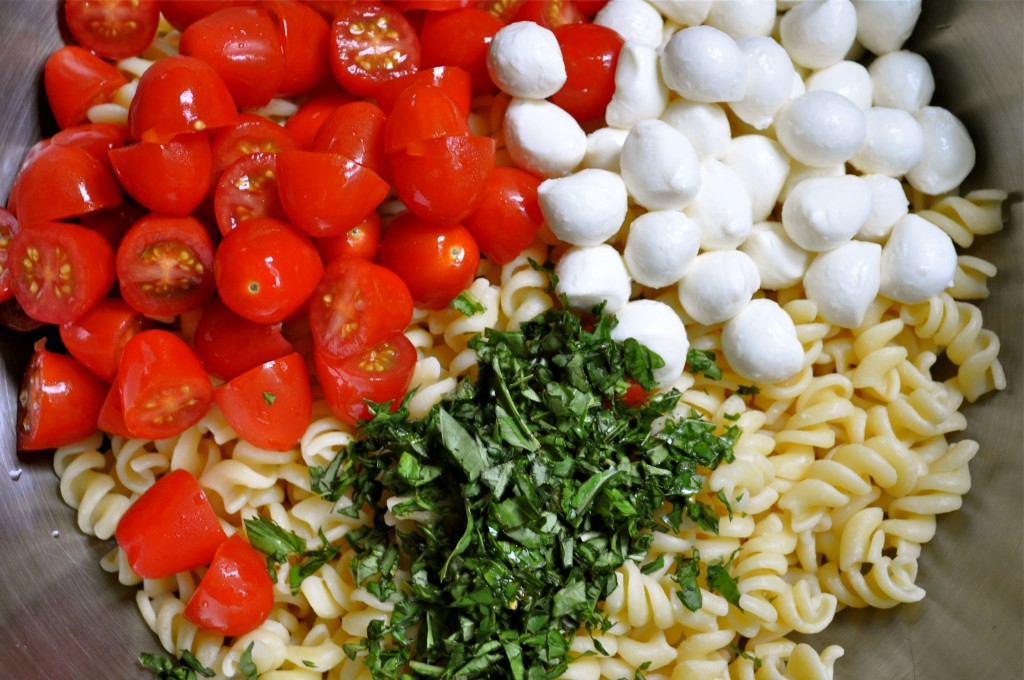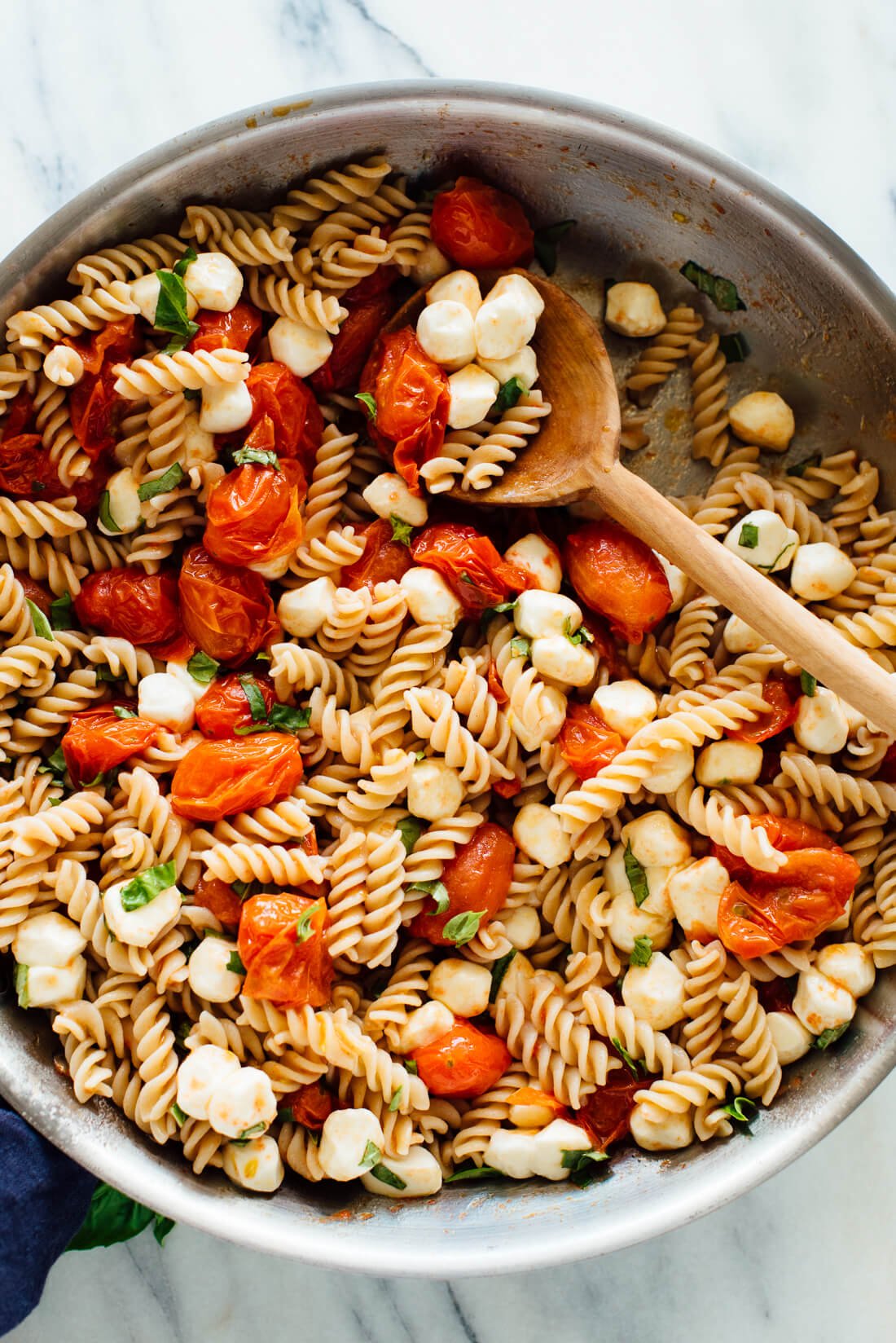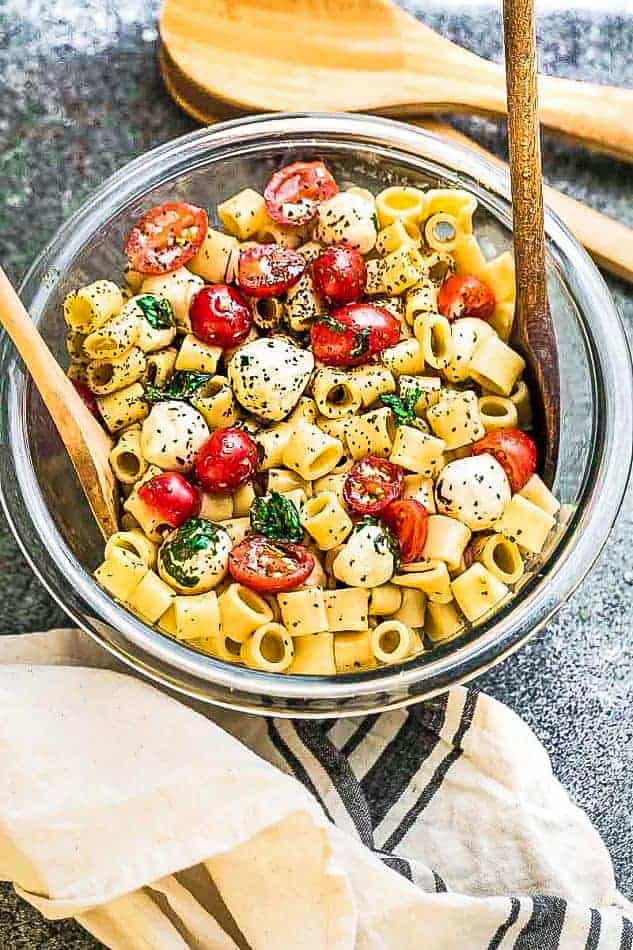Video tentang Caprese Pasta: A Symphony of Summer Flavors
Caprese Pasta: A Symphony of Summer Flavors

Caprese salad, the iconic Italian appetizer of fresh mozzarella, ripe tomatoes, and basil, is a culinary masterpiece in its simplicity. Its vibrant colors and refreshing flavors perfectly encapsulate the essence of summer. But what happens when you elevate this beloved trio beyond the appetizer plate and incorporate it into a pasta dish? The result is Caprese pasta, a culinary delight that marries the ease of a simple salad with the satisfying heartiness of pasta. This isn’t just a pasta dish; it’s a celebration of fresh, seasonal ingredients, a testament to the beauty of Italian cooking, and a surprisingly versatile recipe that can be adapted to suit a variety of tastes and preferences.
This article will delve into the world of Caprese pasta, exploring its origins, variations, the key ingredients that make it sing, and offering tips and tricks for creating the perfect dish. We’ll also discuss different pasta shapes that complement the dish’s delicate flavors and textures, as well as explore ways to elevate this simple recipe for special occasions.
A Taste of History: The Evolution of Caprese Pasta
While the precise origins of Caprese pasta remain somewhat elusive, its popularity undoubtedly stems from the enduring appeal of the Caprese salad itself. The salad, named after the island of Capri, likely emerged in the late 19th or early 20th century, coinciding with the rise of Italian tourism and the increasing appreciation for simple, fresh ingredients. The combination of creamy mozzarella, juicy tomatoes, and fragrant basil was a natural progression from the readily available produce of the region.
The transition from Caprese salad to Caprese pasta was a natural evolution. Pasta, a staple of Italian cuisine, provided a perfect vehicle for showcasing the vibrant flavors of the salad. The creamy texture of the mozzarella, the burst of sweetness from the tomatoes, and the herbaceous aroma of the basil all found a harmonious home within the comforting embrace of the pasta. The exact timing of this culinary fusion is difficult to pinpoint, but its popularity has steadily grown, becoming a staple in many Italian-inspired kitchens worldwide.
The Key Ingredients: A Fresh Approach to Flavor
The beauty of Caprese pasta lies in its simplicity. The success of the dish hinges on the quality of its core ingredients:
-
Pasta: The choice of pasta is surprisingly impactful. While any pasta shape can technically be used, certain shapes work better than others. Short, sturdy shapes like rotini, farfalle (bow ties), penne, or fusilli are ideal as they effectively hold the sauce and ingredients. Long, thin pasta like spaghetti or linguine can also be used, but may require a slightly thicker sauce to prevent it from becoming dry.

-
Mozzarella: Fresh mozzarella di bufala is the quintessential choice, offering a creamy, milky texture and a slightly tangy flavor that perfectly complements the other ingredients. However, fresh cow’s milk mozzarella is an excellent and more readily available alternative. Avoid using pre-shredded mozzarella, as its texture tends to be drier and less appealing.

Tomatoes: Ripe, juicy tomatoes are essential. Heirloom tomatoes, with their varied colors and intense flavors, are a luxurious choice. However, good quality vine-ripened tomatoes will also deliver excellent results. Avoid using overly watery or bland tomatoes, as they can dilute the flavor of the dish.
-
Basil: Fresh basil is a non-negotiable ingredient. Its peppery, slightly sweet aroma and flavor are crucial for balancing the richness of the mozzarella and the sweetness of the tomatoes. Use generous amounts of basil, both in the sauce and as a garnish.

Beyond the Basics: Enhancing the Caprese Pasta Experience
While the classic Caprese pasta is a masterpiece in its simplicity, there are numerous ways to enhance its flavor profile and add a touch of personal flair:
-
Garlic: A touch of minced garlic can add a subtle savory note to the sauce. However, use it sparingly, as it shouldn’t overpower the delicate flavors of the other ingredients.
-
Balsamic Glaze: A drizzle of high-quality balsamic glaze adds a touch of sweetness and acidity, enhancing the overall complexity of the dish.
-
Olive Oil: Good quality extra virgin olive oil is essential. It not only adds flavor but also contributes to the richness and creaminess of the sauce.
-
Lemon Juice: A squeeze of fresh lemon juice adds brightness and acidity, balancing the richness of the mozzarella.
-
Pesto: A dollop of pesto can add a vibrant, herbaceous note to the dish.
-
Pine Nuts: Toasted pine nuts add a delightful crunch and nutty flavor.
-
Sun-dried Tomatoes: Incorporating sun-dried tomatoes adds a concentrated tomato flavor and a chewy texture.
Variations on a Theme: Exploring Different Caprese Pasta Recipes
The beauty of Caprese pasta lies in its adaptability. Numerous variations exist, each offering a unique twist on the classic recipe:
-
Creamy Caprese Pasta: Adding a touch of cream to the sauce creates a richer, more decadent dish.
-
Caprese Pasta with Burrata: Substituting burrata for mozzarella adds an even creamier, more luxurious texture.
-
Baked Caprese Pasta: Baking the pasta in the oven with the sauce and ingredients creates a warm, comforting dish.
-
Caprese Pasta with Chicken or Shrimp: Adding grilled chicken or shrimp adds protein and enhances the overall nutritional value of the dish.
-
Spicy Caprese Pasta: Adding a pinch of red pepper flakes adds a touch of heat.
Tips for Pasta Perfection:
-
Salt the pasta water generously: This seasons the pasta from the inside out.
-
Cook the pasta al dente: This ensures the pasta retains its texture and doesn’t become mushy.
-
Reserve some pasta water: This can be added to the sauce to create a creamier consistency.
-
Don’t overcook the ingredients: The tomatoes and basil should retain their freshness and vibrant colors.
-
Taste and adjust seasoning: Add salt, pepper, and other seasonings to taste.
Serving and Presentation:
Caprese pasta is a visually appealing dish. Serve it immediately after preparing, garnished with fresh basil leaves, a drizzle of olive oil, and a sprinkle of grated Parmesan cheese (optional). The vibrant colors of the tomatoes, mozzarella, and basil create a stunning presentation that is as delightful to the eye as it is to the palate.
Conclusion:
Caprese pasta is more than just a dish; it’s an experience. It’s a celebration of fresh, seasonal ingredients, a testament to the simplicity and elegance of Italian cuisine, and a versatile recipe that can be adapted to suit a variety of tastes and preferences. Whether you’re a seasoned chef or a novice cook, Caprese pasta is a dish that is sure to impress. So, gather your ingredients, embrace the summer flavors, and embark on a culinary journey that will transport you to the sun-drenched shores of Italy. The simple pleasure of a perfectly crafted Caprese pasta is a testament to the power of fresh, high-quality ingredients and the magic of Italian culinary tradition. Buon appetito!

Penutup
Therefore, we hope this article has provided valuable insights on Caprese Pasta: A Symphony of Summer Flavors. We appreciate your attention to our article . See you in our next article!

